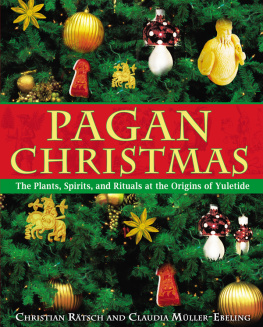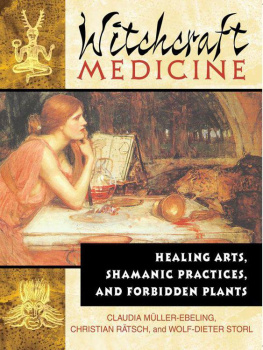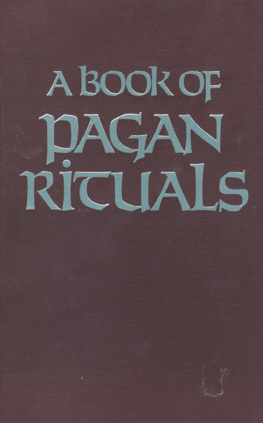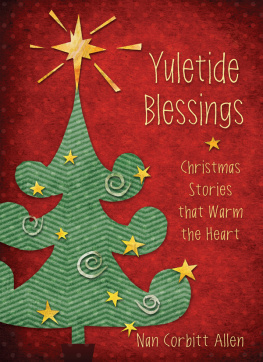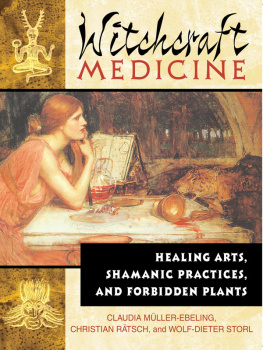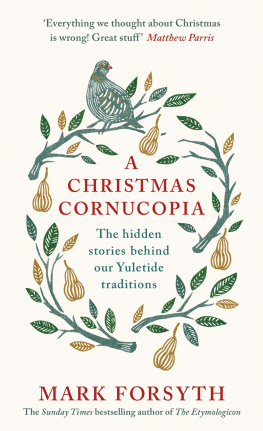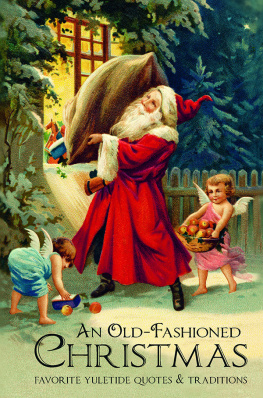Claudia Müller-Ebeling - Pagan Christmas: The Plants, Spirits, and Rituals at the Origins of Yuletide
Here you can read online Claudia Müller-Ebeling - Pagan Christmas: The Plants, Spirits, and Rituals at the Origins of Yuletide full text of the book (entire story) in english for free. Download pdf and epub, get meaning, cover and reviews about this ebook. year: 2011, publisher: Inner Traditions, genre: Science fiction. Description of the work, (preface) as well as reviews are available. Best literature library LitArk.com created for fans of good reading and offers a wide selection of genres:
Romance novel
Science fiction
Adventure
Detective
Science
History
Home and family
Prose
Art
Politics
Computer
Non-fiction
Religion
Business
Children
Humor
Choose a favorite category and find really read worthwhile books. Enjoy immersion in the world of imagination, feel the emotions of the characters or learn something new for yourself, make an fascinating discovery.
- Book:Pagan Christmas: The Plants, Spirits, and Rituals at the Origins of Yuletide
- Author:
- Publisher:Inner Traditions
- Genre:
- Year:2011
- Rating:4 / 5
- Favourites:Add to favourites
- Your mark:
- 80
- 1
- 2
- 3
- 4
- 5
Pagan Christmas: The Plants, Spirits, and Rituals at the Origins of Yuletide: summary, description and annotation
We offer to read an annotation, description, summary or preface (depends on what the author of the book "Pagan Christmas: The Plants, Spirits, and Rituals at the Origins of Yuletide" wrote himself). If you haven't found the necessary information about the book — write in the comments, we will try to find it.
Pagan Christmas: The Plants, Spirits, and Rituals at the Origins of Yuletide — read online for free the complete book (whole text) full work
Below is the text of the book, divided by pages. System saving the place of the last page read, allows you to conveniently read the book "Pagan Christmas: The Plants, Spirits, and Rituals at the Origins of Yuletide" online for free, without having to search again every time where you left off. Put a bookmark, and you can go to the page where you finished reading at any time.
Font size:
Interval:
Bookmark:
PAGAN CHRISTMAS
The Plants, Spirits, and Rituals at the Origins of Yuletide
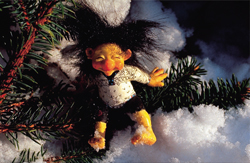
Christian Rtsch and Claudia Mller-Ebeling
Translated from the German by Katja Lueders and Rafael Lorenzo

Inner Traditions
Rochester, Vermont
CONTENTS
FOR OUR FAMILY

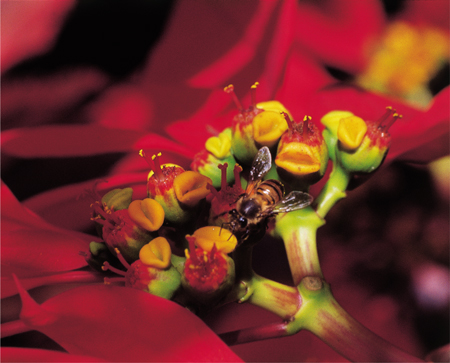
PREFACE
W e celebrate Christmas in the middle of winter, when the trees are bare and nothing in our gloomy, gray and white surroundings reminds us of the vivid green landscape of summer. Each year at Christmastime, we participate in a kind of ritual summerfest involving evergreen branches and winter-blooming plants, during the heart of the cold, dark winter season. Why? The simple answer is because it is exactly at this time of year that we yearn most strongly for green plants, blossoms, and the light of the sun. During the harsh winters of the past, our ancestors felt the same longing.
This book is about the ethnobotany of Christmasa study of Christmas plants and their symbolic uses and meanings throughout the centuries. Looking at it in the glowing light of the candles in the Advent wreath and the festively lit Christmas tree, it is easy to see that plants contribute much to this feast season. During the dark time of Advent, we especially appreciate having a green fir tree and blooming plants in the house, such as poinsettia and Christmas cactus. We hang mistletoe and decorate our doors with wreaths made from fir, ivy, and holly. For roasts and baking, we use exotic spices from trees, shrubs, and plants of tropical regions. The children wait excitedly for St. Nicholas, Father Christmas, or Santa Claus, for whom they put out shoes, stockings, and gift plates, expecting marzipan, chocolate, apples, tangerines, and nuts in return. Many of these delights come from trees in warm, faraway regions from which we import their fruits.
Christmas is the most culturally pervasive and successful feast of all time. But what is behind our treasured Christmas traditions and customs? Why do green fir branches, flowers that bloom in the middle of the winter, Christmas spices, and incense still play such a central role in Christmas celebrations around the world? What are the symbolic meanings behind the use of these plants, and how have the old customs survived into the present computer age?
We discover amazing answers hidden in the darkness of history. A multilayered background of symbolic meaning has made these plants a central part of Christmas rituals all over the world. The use of the plants that play such an important role at Christmastime originates not only where we most expect itin the customs surrounding the Christian feast of the birth of Jesusbut also in ancient, pre-Christian, pagan traditions.
The symbolic meanings of these plants have roots in the distant past, when our ancestors were more intimately connected with the passage of the seasons. They were much more dependent than contemporary city people on the return of the sun and the plants after the long, dark winter nights. Depending on their values and beliefs, some modern people may choose to ignore or reject the history within which our well-known Christmas customs are rooted. Some react with interest to events and beliefs of days past; others feel that the historical sources contradict their religious beliefs or are otherwise irrelevant to our current Christmas customs. We can either profit from the traditions, beliefs, philosophies, and realities of life of other cultures, societies, and timesor we can ignore, refute, or fight them. We have the freedom to choose.
As individuals, contemporaries of a particular generation, or part of a given cultural, religious, or national tradition, we all have a past. How prepared we are to take a long, hard look at our own life, at our personal childhood and past, and beyond that, at our cultural, religious, and historical heritage, is entirely a matter of individual choice. But none can deny the essential role plants have played and continue to play in the midwinter celebration that we call Christmas.
C. MLLER-EBELING, HAMBURG,
IN THE ADVENT TIME OF 2002
Why a Book About Christmas Plants?
Fir trees, mistletoe, holly, golden oranges, red apples, ripe nuts, exotic spices, straw stars, cinnamon stars, mugwort roast, witches houses made from gingerbread, and currant loaf (Christstollen): Its Christmas all around!
Christmas is part of the cultural heritage of the world, a global syncretism, a potpourri and conglomeration of elements that manifests itself finally, and most significantly, in the uses of flora from all over the world. From the familiar to the exotic, Christmas involves teas and shrubs from East and West, spices from the Orient and the New World, incenses from Eastern as well as Nordic sources. There are northern and southern fruits, herbs, and other plants to use and enjoy, including tobacco, magic mushrooms, and ingredients for special brews. There are flowers and other decorative plants from the rain forest, the desert, and the mountainsfrom all ecological zones and from all cultures.
Our Christmas ethnobotany explores the use of plants from all over the world that have become and remain a central part of the global Christmas ritual. Every plant comes with its own story with which to enrich the feast. Every plants history hangs like a treasured ornament from the world tree that gives us a home in the universe. At Christmastime, the middle-class living room becomes the setting for shamanic rituals with deep roots in ancient traditions. Thus this book is not only about Christmas plants and customs, but also about the origins and historical background of the traditions that continue to inspire us and delight our senses.
For who doesnt like Christmas? Even Friedrich Nietzsche liked the feast: You cant believe how much I am looking forward to Christmas, wonderful Christmas! the philosopher wrote to his mother, Franziska, and his sister, Elisabeth, on December 5, 1861. Christmas makes everything good!
C. RTSCH, HAMBURG,
AT THE TIME OF THE SUMMER SOLSTICE, JUNE 2003
THE ETHNOBOTANY OF CHRISTMAS
Our ancestors are the worldly essences: water, salt, and acid. They live within us, and yet, at the same time, they are always leaving us. And then, time after time, they come seeking us out again. Through the plants they remind us of a state of timelessness, where human heritage is just a breath of wind on a lakes surface. Human history is also plant history.
SCHENK 1960, 7
C hristmas is a Christian feast infiltrated by ancient pagan customs. On the other hand, it is also a pagan feast over layered with Catholic liturgical and folk rituals. It is the feast of the birth of the savior Jesus Christ and of the suns rebirth; it is the time of midwinter smudging nights during which people smudged with herbs to cleanse their homes and stables and protect themselves against evil influences. This time, when the old year gives way to the new, is a time of gods and spirits, veritable orgies of gift giving, and rituals intended to ward off danger and ensure the fertility of the fields in the coming year.
Throughout the season runs evidence of a very rich Christmas ethnobotany, with ancient traces we will follow to their roots in this book. During this excursion into the past, we will learn much about Christmas trees and Christmas greens; about Christmas spices, scents, and incense; about protective rituals that have survived until modern times. The mythology of plants leads us to the origins of the culture of shamanism and the sacred botany (hierobotany) of ancient timesinto medieval customs involving witches magic, the warding off of demons, fertility rites, and rites of sacrifice.
Next pageFont size:
Interval:
Bookmark:
Similar books «Pagan Christmas: The Plants, Spirits, and Rituals at the Origins of Yuletide»
Look at similar books to Pagan Christmas: The Plants, Spirits, and Rituals at the Origins of Yuletide. We have selected literature similar in name and meaning in the hope of providing readers with more options to find new, interesting, not yet read works.
Discussion, reviews of the book Pagan Christmas: The Plants, Spirits, and Rituals at the Origins of Yuletide and just readers' own opinions. Leave your comments, write what you think about the work, its meaning or the main characters. Specify what exactly you liked and what you didn't like, and why you think so.

